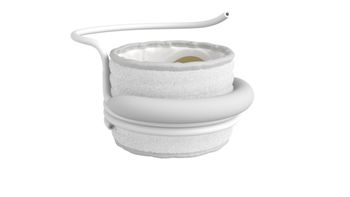
What post-COVID-19 means for practices and hospitals
The healthcare landscape will look very different in this new world
It’s no secret that COVID-19 has wreaked havoc on the U.S. healthcare economy, which previously had been described as recession-proof. Many believe that because the demand for healthcare-related services continues to grow, the providers of those services will stay busy and thereby generate revenue in both good and bad economic times. Moreover, you would think that, as an illness, COVID-19 should have bolstered the world of medical economics. Who would have expected that a worldwide illness – a declared pandemic – would bring the medical world to its knees?
Surgical volumes Are dropping to historic lows
Sadly, the medical community was not equipped to handle a healthcare crisis of this magnitude or the manner and speed in which it spread worldwide and throughout the US. The availability of hospital beds and necessary equipment to treat COVID-19 patients became a priority, unfortunately, at the expense of other illnesses and surgical procedures. In some situations, potential patients put off going to the ER or seeking immediate medical care, and surgeons were forced to cancel and hold off on elective surgeries. According to a 2011 study by
Practices Are rethinking long-term plans
These surgical volume decreases have also devastated surgeons and anesthesiologists, forcing many to make difficult decisions throughout the pandemic and in planning for the post-COVID-19 landscape. With the loss of elective procedures,
Hospitals lose millions and seek recovery strategies
Sadly, the impact of
Hospitals and medical practices alike will continue to look for ways to deal with these increased financial and administrative burdens, especially having been compounded by COVID-19. The mounting pressures will likely result in additional hospital and medical practice consolidations through increased merger and acquisition activity. These consolidations, however, will not be isolated to individual hospitals and medical practices, but will likely include hospital systems and sizable national practice management companies as well. For example, the industry recently witnessed
As hospitals and practices continue to reel from the effects of COVID-19, many will look for opportunities to transfer some or all of these burdens. Mergers may provide an attractive option for those hospitals and practices that do not want to sell and/or give up complete control to an acquiring entity, but instead wish to retain some local independence, while potentially gaining resources not otherwise available to a smaller entity. The growth obtained in a merger may allow the new, larger, combined entity to obtain additional needed resources while spreading out the administrative and financial risks, liabilities and burdens through economies of scale. Alternatively, we should see a significant spike in acquisition activity, whether through organic growth or direct acquisitions. COVID-19 has exposed a new pool of hospitals, hospital systems and medical practices that are ripe for acquisition and that will likely begin looking for potential suitors. This creates opportunities for investors and acquisition partners who can and are willing to provide an infusion of financial and intellectual capital.
Living in a post-COVID-19 world
While the proliferation of investment capital abounds, and pressures to drive down expenses while increasing revenue continue, the healthcare landscape will look very different in a post-COVID-19 world. Combine those elements with shell-shocked hospitals and medical practices still reeling from what is hoped to be a once-in-a-lifetime pandemic, and there is little doubt hospital and practice consolidations will increase as we enter the post-COVID-19 world.
By John Friedel, Vice President of National Accounts at abeo, a pathfinder in revenue advisory, services and technology solutions that help to drive optimization, compliance and efficiency surrounding hospital-based specialties like anesthesia.
Newsletter
Stay informed and empowered with Medical Economics enewsletter, delivering expert insights, financial strategies, practice management tips and technology trends — tailored for today’s physicians.








